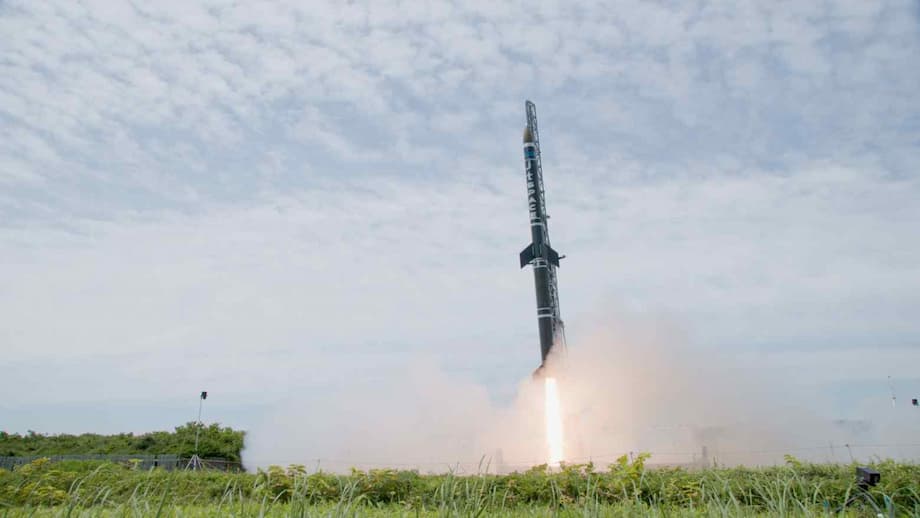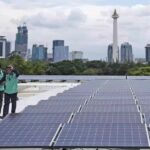Why a foreign rocket lifted off from Hokkaido and why it matters
On July 12, 2025, a rocket built by a Taiwanese startup lifted off from Hokkaido Spaceport in Taiki Town, northern Japan. The launch marked the first time a vehicle developed with foreign capital has flown from Japanese soil. The test did not reach space, yet the milestone shows that Japan’s commercial spaceports are opening to international users. For Japan, that means new business and more frequent launches. For Taiwan’s private space sector, it offered a nearby range to trial a new design and gather flight data.
- Why a foreign rocket lifted off from Hokkaido and why it matters
- What went wrong in the test flight
- Why Hokkaido is becoming Japan’s gateway for launches
- Opening Japanese spaceports to the world
- How the private launch race in Japan is shaping up
- Security concerns and safeguards
- What comes next for TiSPACE and HOSPO
- Key Points
Operated by jtSPACE, the Japanese arm of Taiwan Innovative Space (TiSPACE), the VP01 sounding rocket left the pad at 11:40 a.m. local time. The two stage vehicle measures 12 meters in length, about 0.6 meter in diameter, and weighs roughly 1.4 tons at liftoff. VP01 uses hybrid propulsion, a design that burns solid synthetic rubber with liquid nitrous oxide. According to company materials, the first stage produces roughly 6,500 kilogram force of thrust and the second stage about 1,100 kilogram force. The plan was to arc southeast over the Pacific and reach about 100 kilometers, the Karman Line that many agencies treat as the boundary of space.
Seconds into flight the vehicle began to lose stability and roll. Range video showed a wobble. Data indicates the first stage likely separated and splashed down as planned, but the second stage lost control immediately after staging. The range safety officer sent a command to end the mission. The flight termination system shut down propulsion and the stage came down inside a restricted area near the spaceport. The rocket reached about 4 kilometers altitude. No payload was carried and no injuries were reported.
Weather complicated the campaign even before ignition. A typhoon pushed a planned July 6 window to July 12. The operator arranged three possible windows each day, 6:00 to 7:30, 10:50 to 12:00, or 16:00 to 17:00, with backup dates across multiple weekends. That kind of flexibility is normal for early rocket tests, which depend on stable upper level winds and steady ground conditions.
What went wrong in the test flight
TiSPACE and the spaceport operator describe VP01 as a technology demonstrator. Sounding rockets like VP01 climb to the fringe of space, then fall back to Earth. They validate engines, guidance, structures, telemetry, and range safety. Early flights can fail for many reasons, from software that needs tuning to sensor drift or unexpected aerodynamic loads. Lessons from a controlled failure still unlock improvements.
Space Cotan, which operates Hokkaido Spaceport, said the second stage was intentionally terminated when the mission could no longer proceed. The choice to end a flight is standard practice. It protects people on the ground and preserves infrastructure for future attempts. The company summarized the decision in a statement:
The second stage was terminated after separation, as it was determined that the mission could no longer proceed.
VP01 is a new design for TiSPACE. The company has not yet logged a successful spaceflight. A related attempt by its sister company in Australia in 2022 ended after an oxidizer leak on the pad. The Japanese test helps the team gather flight data on structure loads, stage separation behavior, and engine performance under real conditions. That information feeds back into software and hardware updates before the next attempt.
Investigators will focus on the period just after staging. A second stage that loses stability can tumble if guidance software does not converge on the planned attitude, if a control valve sticks, or if the engine thrust vector varies faster than the control system can respond. Hybrid motors deliver good safety and simplicity, yet they can produce pressure oscillations that complicate control. These are typical engineering challenges on early test flights.
Why Hokkaido is becoming Japan’s gateway for launches
Hokkaido provides several natural advantages for rocketry. The island sits far to the north, which suits polar and sun synchronous orbits used by Earth observation satellites. Downrange from the Taiki coast lies open Pacific water, so stages and debris fall zones can be drawn over the sea with minimal risk. Population density is low near the coastal range, which helps with evacuation planning and airspace closures.
The spaceport, branded HOSPO, is a private facility operated by Space Cotan in partnership with Taiki Town. The site includes launch pads, telemetry stations, and integration hangars. Local authorities promote the base as a platform for sounding rockets, small launch vehicles, and flight test campaigns. HOSPO also courts foreign customers, as now demonstrated by a Taiwan backed mission. The operator has been adding infrastructure to support a higher cadence, including range safety systems, downrange tracking, and logistics for international teams.
Geography is not the only draw. Japan has a deep aerospace supply chain, reliable ports and airports, and strong rule of law. For foreign startups, those traits reduce operational risk. The Hokkaido setting doubles as a community development initiative, with tourism and education programs built around launch days.
Opening Japanese spaceports to the world
The VP01 test is the first launch from Japan of a rocket developed with foreign capital. It represents a policy shift toward international use of domestic ranges. Tokyo has set a goal to double the size of its 4 trillion yen space industry over the next decade and is weighing how far to welcome overseas firms. Industry advocates say a more open posture can speed the growth of launch services, satellite data businesses, and manufacturing.
Taiwanese companies face a shortage of test ranges at home. JtSPACE executives have said cross border collaboration is necessary while regulations and facilities evolve in Taiwan. Japan, with a receptive local government in Hokkaido and a private operator at HOSPO, offered a practical route to get hardware into the air.
A Japan Taiwan deeptech corridor
Japan and Taiwan already partner across semiconductors, advanced manufacturing, and artificial intelligence. This network can support rocketry too. Shared suppliers, joint research, and cross border investment reduce costs and spread risk for small teams trying to enter launch services. The result is faster iteration and better access to talent.
The collaboration is not only about rockets. It builds an ecosystem that helps payload makers, ground segment providers, and component suppliers. Lessons from VP01, even from a failed attempt, circulate through this network and inform the next wave of prototypes.
How the private launch race in Japan is shaping up
Japan’s private launch scene is moving quickly but success is hard won. Interstellar Technologies, based in Hokkaido, became the first private Japanese venture to reach space with a sounding rocket in 2019. That vehicle did not carry a satellite, so it was not an orbital mission. Space One attempted to reach orbit last year but suffered two failures. Large manufacturers are joining the field. Honda performed a low altitude hover test of a reusable prototype in Hokkaido and targets a first spaceflight by 2029.
Global competition is intense. SpaceX and Rocket Lab dominate commercial launch for small and medium payloads. For Japanese teams, the near term focus is on suborbital tests, micro launchers to low Earth orbit, and reliability. Foreign customers can help sustain flight rates. Welcoming a Taiwan built vehicle into the manifest strengthens the business case for facilities like HOSPO.
Security concerns and safeguards
Some Japanese policy experts caution that foreign sounding rocket work could draw scrutiny from China, which tracks Taiwan’s advances in missile related technology. Civilian rockets and missiles share many components. That overlap is why export controls and safety oversight matter.
Japan manages these risks through range safety, licensing, and technology controls. Launches at HOSPO are subject to airspace closures, ground evacuation zones, and real time telemetry monitoring. The flight termination system that ended VP01 is part of this framework. Bilateral cooperation, careful payload screening, and transparency around intent help separate civilian aerospace development from military activity.
What comes next for TiSPACE and HOSPO
TiSPACE and jtSPACE will now sift through telemetry to reconstruct the second stage failure. Engineers will test valves, actuators, and control algorithms, then decide which changes to prioritize. The company has said it plans to build orbital launch capability in stages, using sounding rocket data to iterate. A second attempt from Hokkaido would likely follow a review by the operator and local authorities.
Space Cotan said that the vehicle was brought down by the range safety system and reported no injuries. In remarks cited after the attempt, CEO Yoshinori Odagiri said the operator would wait for the investigation into the second stage before discussing a new schedule. HOSPO expects to host more domestic and international tests, and the site is positioning itself as a service provider that integrates logistics, regulatory support, and range operations for visiting teams.
Key Points
- A rocket built by a Taiwanese startup launched from Hokkaido Spaceport on July 12, 2025, the first time a vehicle developed with foreign capital has flown from Japan.
- VP01 lifted off at 11:40 a.m., reached about 4 kilometers, and was terminated by range safety after the second stage lost stability. The target was about 100 kilometers.
- No injuries or damage were reported. The rocket carried no payload.
- VP01 uses a hybrid system that burns synthetic rubber with nitrous oxide. TiSPACE has not yet recorded a successful spaceflight and a related Australian attempt in 2022 ended on the pad after an oxidizer leak.
- Weather delayed the campaign from July 6 to July 12, with multiple daily windows and backup dates.
- Hokkaido offers high latitude launch corridors over the Pacific and low population density, and HOSPO is adding infrastructure to serve more customers.
- Japan is opening its spaceports to foreign users as it seeks to expand the space economy. Taiwanese teams look to Japan while domestic launch facilities and rules develop.
- Interstellar Technologies reached space with a sounding rocket in 2019, Space One had two failed orbital attempts last year, and Honda is testing a reusable prototype for a first spaceflight by 2029.
- Some analysts warn of regional sensitivities around missile related technology. Japan applies range safety and licensing to keep launches civilian and safe.




